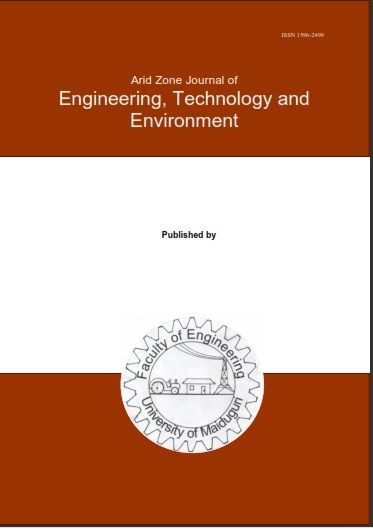Abstract
Biomass energy is a possible replacement for the conventional energy due to its environmental effects. However, raw biomass has poor combustible properties which can be enhanced by torrefaction. This research studied the torrefaction properties of brimstone wood as potential energy source. Existing torrefaction device was modified by incorporating a thermocouple and temperature regulator and rectangular reactor was used for the torrefaction of brimstone wood. Harvested samples of the materials were manually processed into smaller pieces and sun dried. The sun-dried samples were crushed and sieved into 8, 10 and 12 mm particle sizes. The sieved samples were subjected to ultimate (Carbon (C), Oxygen (O), Hydrogen (H), Nitrogen (N), Sulphur (S) and energy contents) compositions analysed using standard methods. A 3 by 3 Box Behnken experimental design in the Design Expert 12.0.2 software was used to design the experiment. The influence of heating temperature (220, 260 and 300 0C), heating time (30, 60 and 90 min) and particle size (8, 10 and 12 mm) on the weight of biochar products were studied. Model equations were developed and used to evaluate Biochar Mass Yield (BMY), Energy Yield (BEY) and Energy density (BED) and evaluated based on the heating temperature, heating time and particle size ranges. The data obtained from the experimental design were analysed statistically with Analysis of Variance (ANOVA) at 95 % confidence level. The carbon, oxygen, hydrogen, nitrogen, sulphur and energy contents for brimstone wood were 52.20, 36.88, 2.40, 0.54, 0.89% and 245.89 kcal/100g. R2 values of BMY, BEY and BED were 0.9499, 0.9348 and 0.9990 at P≤0.05 for brimstone wood. Torrefied brimstone wood has been identified as potential sources of energy, with heating temperature and heating time as critical parameters that affect properties of torrefied materials.

This work is licensed under a Creative Commons Attribution-NonCommercial-NoDerivatives 4.0 International License.
Copyright (c) 2025 ARID ZONE JOURNAL OF ENGINEERING, TECHNOLOGY AND ENVIRONMENT

